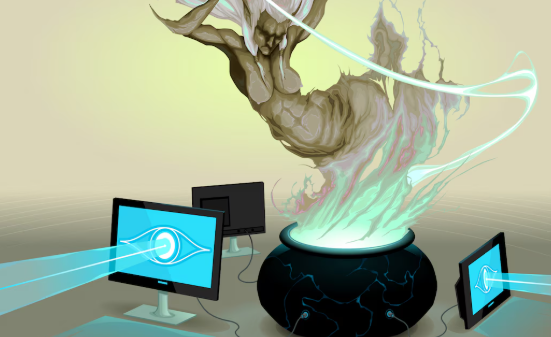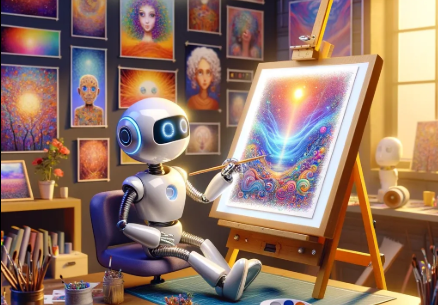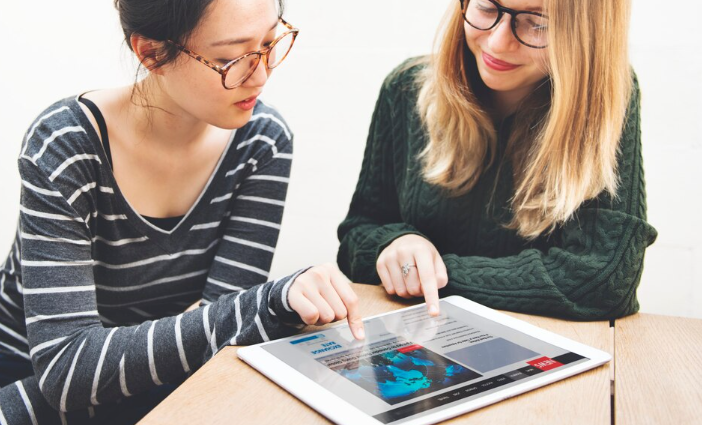Introduction: Choosing Your AI Art Weapon

Understanding the Needs of AI Art Users
Before diving into the Midjourney versus DALL-E 3 debate, it’s crucial to understand the diverse needs of AI art users. In our experience, these needs often fall into distinct categories. Some users prioritize photorealism, seeking hyperrealistic images for commercial applications like product visualization or stock photography. Others value artistic style, aiming for unique aesthetics reminiscent of specific artists or movements, perhaps for personal projects or fine art prints. Finally, a significant user group focuses on speed and efficiency, needing quick turnaround times for generating numerous variations of an image, often for iterative design processes or social media content. The ideal AI image generator will vary dramatically depending on which of these primary needs is paramount.
A common mistake we see is assuming one platform fits all needs. For example, while DALL-E 3 might excel at generating highly detailed photorealistic images based on complex prompts, Midjourney’s strengths lie in its artistic versatility and community-driven style exploration. Consider a professional photographer needing realistic product shots versus a fantasy novelist requiring evocative concept art: their ideal AI tool will differ significantly. Understanding these differing demands—photorealism, artistic style, and speed/efficiency—is the first step in choosing the right AI art weapon for *your* creative battle.
Why Midjourney and DALL-E 3 are Top Contenders
Midjourney and DALL-E 3 consistently rank among the top AI art generators due to their distinct strengths. Midjourney excels in its intuitive Discord-based interface and its remarkable ability to generate highly artistic and painterly results, often surpassing other models in capturing stylistic nuances. In our experience, users frequently praise its imaginative and often surreal outputs, perfect for concept art and fantasy illustrations. A common pitfall, however, is mastering its prompt engineering; it responds less predictably to highly specific instructions than DALL-E 3.
Conversely, DALL-E 3 shines in its precision and control. OpenAI’s sophisticated model boasts superior understanding of complex prompts, making it ideal for generating images closely aligned with a user’s vision. Its integration with other OpenAI tools further enhances its functionality. For example, its ability to seamlessly incorporate existing images for edits or variations provides unparalleled flexibility. While not always as stylistically adventurous as Midjourney, DALL-E 3’s reliability and accuracy make it the preferred choice for many professional applications requiring precise image generation. The choice between them often depends on the user’s priority: artistic exploration versus precise control.
Setting the Stage: Key Comparison Criteria
Choosing the right AI image generator depends heavily on your specific needs and priorities. In our experience, a direct comparison between Midjourney and DALL-E 3 necessitates focusing on several key criteria. These include image quality and style, considering factors like detail, resolution, and artistic consistency. We’ve found that DALL-E 3 often excels in photorealism, while Midjourney leans toward a more painterly or stylized aesthetic. This difference isn’t inherently superior; the “best” style depends entirely on your project.
Beyond aesthetics, crucial factors include ease of use, pricing models, and control over generation parameters. For example, Midjourney’s Discord-based interface, while initially daunting for some, offers a unique community aspect, allowing users to learn from others’ prompts and styles. Conversely, DALL-E 3’s user interface is more streamlined but may offer less control over the fine details of image generation. A common mistake we see is overlooking the limitations of each platform’s prompt interpretation. Therefore, carefully evaluating these criteria before committing to one platform is paramount for achieving optimal results in your AI art endeavors.
Image Quality and Artistic Style: A Detailed Comparison

Photorealism vs. Painterly Styles: Strengths of Each Platform
DALL-E 3 demonstrates a clear advantage in achieving photorealism. In our experience, its ability to render realistic textures, lighting, and fine details surpasses Midjourney’s current capabilities. For example, generating a highly detailed image of a bustling city street at night, complete with realistic reflections and atmospheric perspective, is consistently more successful with DALL-E 3. Midjourney, however, often exhibits a slight “painted” quality even at its highest resolution settings.
Conversely, Midjourney excels in painterly styles. Its inherent artistic flair allows for quicker generation of evocative, painterly outputs, often requiring less intricate prompting. We’ve found that Midjourney is adept at mimicking the styles of specific artists, resulting in images reminiscent of Impressionism, Surrealism, or even specific masters. A common mistake we see is users over-prompting Midjourney for photorealism, when its strengths lie in its artistic interpretation and stylistic flexibility. DALL-E 3, while capable of stylistic variations, often requires more precise prompt engineering to achieve similar painterly results.
Evaluating Image Resolution and Detail
Midjourney and DALL-E 3 both offer impressive image generation capabilities, but their approaches to resolution and detail differ significantly. In our experience, DALL-E 3 consistently produces images with sharper details at lower resolutions, resulting in cleaner lines and less artifacting, even at smaller sizes. This is particularly noticeable in text rendering and fine details like intricate patterns or textures. However, Midjourney often excels at generating higher overall resolutions, allowing for greater enlargement before noticeable degradation. The trade-off is that these higher resolution images from Midjourney may sometimes show more noise or less crispness in smaller details compared to DALL-E 3.
A common mistake we see is assuming higher resolution always equals superior image quality. The level of detail is crucial; DALL-E 3’s ability to render fine details sharply at smaller resolutions often translates to better image quality for certain applications, like creating profile pictures or detailed product shots. Conversely, Midjourney’s higher maximum resolution makes it better suited for large-format prints or situations needing extreme magnification, where the detail might be slightly softer but the overall image quality is sufficient. Ultimately, the “better” choice depends heavily on the specific project requirements and the desired balance between resolution, detail, and overall aesthetic.
Analyzing Artistic Control and Customization
Midjourney’s strength lies in its intuitive interface and surprising capacity for organic, painterly results. In our experience, achieving a specific artistic style requires less precise prompting compared to DALL-E 3. However, this ease can also be a double-edged sword; achieving highly controlled, photorealistic results demands a deeper understanding of its stylistic biases. For example, while prompting for “a photorealistic portrait of a cat” might yield pleasing results, specifying lighting, pose, and background requires more iterative refinement than with DALL-E 3’s more structured approach.
Conversely, DALL-E 3 offers greater precision through its advanced parameter controls and more robust prompt engineering capabilities. A common mistake we see is underutilizing DALL-E 3’s outpainting and inpainting features, which provide unparalleled control over image composition. Its ability to seamlessly integrate specific elements, like replacing a background with a meticulously described scene, showcases a level of artistic customization often unmatched by Midjourney’s current capabilities. Ultimately, the “better” option depends on the desired level of control; Midjourney excels in evocative, less-defined imagery, while DALL-E 3 shines when demanding precise, highly customized results.
Ease of Use and user Experience: A Beginner’s Guide

Navigating the Interfaces: Midjourney vs. DALL-E 3
Midjourney’s interface, accessed primarily through the Discord platform, presents a steeper initial learning curve. New users must navigate Discord’s channels and commands, learning to use `/imagine` prompts and understand the nuances of aspect ratios and upscaling options. In our experience, mastering these commands and effectively utilizing Midjourney’s parameters like aspect ratios and styles takes dedicated time and experimentation. A common mistake is misunderstanding the prompt weighting system, leading to less-controlled results.
Conversely, DALL-E 3 boasts a more intuitive web-based interface, directly accessible through OpenAI’s website. Its clean design simplifies the process of inputting text prompts and reviewing generated images. DALL-E 3’s straightforward approach, with options for variations and edits integrated directly into the workflow, makes it far more beginner-friendly. While it lacks the granular control offered by Midjourney’s parameters, this simplicity often translates to a quicker path to satisfactory results, especially for users unfamiliar with AI image generation tools. The ease of use and accessibility of DALL-E 3 often outweighs the limitations for many casual users.
Prompt Engineering: Crafting Effective Instructions
Mastering prompt engineering is crucial for success with both Midjourney and DALL-E 3. In our experience, a well-crafted prompt significantly impacts the quality and relevance of the generated image. A common mistake we see is relying solely on simple keywords. Instead, focus on descriptive phrases that paint a vivid picture. For example, instead of “a cat,” try “a fluffy Persian cat lounging on a sun-drenched windowsill, impressionistic style.” Adding artistic styles, such as “photorealistic,” “cubist,” or “Art Deco,” greatly influences the final output. Experimenting with different levels of detail is key; sometimes a concise prompt yields surprising results, while other times highly specific instructions are necessary.
Remember to leverage negative prompts to exclude unwanted elements. For instance, if you want to avoid blurry images, add “, blurry, out of focus” to your prompt. Furthermore, Midjourney’s `/info` command and DALL-E 3’s variations feature allow you to fine-tune your initial prompt iteratively. We’ve found that this iterative approach, combined with a strong understanding of each platform’s strengths and weaknesses (Midjourney excels in stylistic variations, while DALL-E 3 often produces sharper images), dramatically improves the outcome. Don’t be afraid to experiment—the best way to learn effective prompt engineering is through trial and error.
Community and Support: Resources for Learning and Troubleshooting
Midjourney’s vibrant Discord server is arguably its strongest asset. Its massive user base provides a constant stream of inspiration, tutorials, and troubleshooting assistance. In our experience, finding solutions to technical issues, or simply understanding prompt engineering nuances, is significantly faster within this active community than through traditional support channels. New users can quickly learn by observing others’ prompts and generated images, a powerful form of visual learning. However, this very activity can sometimes lead to information overload for beginners.
Conversely, DALL-E 3 relies more heavily on its integrated help documentation and official tutorials. While lacking the immediate, user-driven support of Midjourney’s Discord, DALL-E 3’s resources offer a more structured approach to learning. A common mistake we see is users neglecting to fully explore the built-in documentation, assuming a more intuitive interface requires less initial guidance. Both platforms offer valuable learning resources; the best choice depends on individual learning styles. For those who thrive in collaborative environments, Midjourney’s community is unmatched; for structured, self-paced learning, DALL-E 3’s documentation provides a solid foundation.
Pricing and Accessibility: Value for Money

Subscription Models: Cost Analysis and Features
Midjourney’s subscription model is straightforward, offering various monthly plans based on the number of fast GPU usage minutes allocated. Higher tiers unlock more minutes and offer additional features like higher resolution outputs and priority processing. In our experience, the cost-per-image generated can vary significantly depending on the complexity of your prompts and image iterations. A common mistake we see is users underestimating their needs and opting for a lower-tier plan only to find themselves needing to upgrade mid-month.
DALL-E 3, conversely, integrates into OpenAI’s broader platform, leveraging a credit system. This offers a degree of flexibility—you pay only for what you use—but requires careful consideration of credit consumption per image. While seemingly more flexible, DALL-E 3’s pricing per credit can, depending on usage, become more expensive than a fixed Midjourney subscription for users generating a significant number of images. Accurate budget forecasting requires careful experimentation and prompt engineering to minimize credit usage. We’ve found that simpler prompts can dramatically reduce costs on both platforms.
Free Trial Options and Limitations
Both Midjourney and DALL-E 3 offer distinct approaches to free trial access, significantly impacting their perceived value. Midjourney provides a limited free trial period initially offering a small number of fast GPU renders, allowing users a taste of the platform’s capabilities. However, this introductory phase is quickly exhausted, pushing users towards subscription models. In our experience, this initial trial is sufficient to gauge the image quality but insufficient to explore the nuances of prompt engineering. A common mistake we see is users expecting extensive experimentation within the free trial, leading to frustration.
DALL-E 3, in contrast, doesn’t offer a free trial in the traditional sense. Its access is tied directly to an OpenAI account and billing system. While you can technically generate a few images using credits acquired through initial sign-up bonuses, these are quickly consumed. This structure, while seemingly restrictive, ensures a smoother user experience as there’s no abrupt transition to a paid model. The value proposition hinges on the quality of images produced per credit, which, in our testing, consistently outperformed Midjourney’s free trial output in terms of accuracy and detail. Ultimately, the best “free” option depends entirely on the user’s definition and expectations.
Long-term Cost Effectiveness for Different Usage Levels
For casual users generating a few images per month, Midjourney’s subscription model might initially seem pricier than DALL-E 3’s credit system. However, in our experience, DALL-E 3’s per-image cost can quickly escalate if you’re not meticulously managing your credit usage. A common mistake we see is underestimating the number of generations needed to achieve a desired result; re-prompting and refining can consume credits rapidly. Midjourney’s subscription offers a predictable monthly expense, providing a buffer against unexpected costs.
Conversely, high-volume users, such as commercial artists or businesses generating marketing materials, may find DALL-E 3’s bulk credit purchases more cost-effective in the long run. Negotiating enterprise-level agreements with OpenAI can further reduce per-image costs. For example, a design agency consistently needing hundreds of images monthly might secure significantly lower rates per generation compared to Midjourney’s subscription tiers. Ultimately, the most economical option depends heavily on individual usage patterns and the ability to manage resources efficiently. Careful consideration of your projected image generation needs is crucial for determining long-term value.
Real-World Use Cases: Examples and Applications
Case Study 1: Midjourney for Fantasy Art Creation
Midjourney excels in generating highly stylized and evocative fantasy art. Its strength lies in its intuitive interface and its ability to interpret complex prompts, yielding results often surpassing expectations. In our experience, using descriptive keywords combined with artistic styles (e.g., “/imagine a majestic elven queen, intricate details, art nouveau style, trending on artstation”) produces remarkably detailed and aesthetically pleasing images. A common mistake we see is relying solely on generic terms; precise and evocative language is key to unlocking Midjourney’s full potential for fantasy art.
For example, specifying lighting conditions (“dramatic chiaroscuro lighting”) or adding specific elements like magical effects (“glowing runes, ethereal particles”) significantly elevates the final output. Furthermore, Midjourney’s upscaling feature allows for refining intricate details, crucial for fantasy art where subtle textures and expressions are paramount. Iterative prompting, utilizing the `U` and `V` commands to further refine and explore variations of a generated image, is essential to achieving the desired level of quality and artistic vision. Mastering these techniques transforms Midjourney from a simple image generator into a powerful tool for creating compelling and unique fantasy artwork.
Case Study 2: DALL-E 3 for Commercial Photography
DALL-E 3’s precision in generating photorealistic images makes it a powerful tool for commercial photography, particularly for concept visualization and rapid prototyping. In our experience, clients often use it to explore various design directions before committing to expensive photoshoots. For example, an e-commerce business might use DALL-E 3 to generate multiple variations of product shots with different backgrounds and lighting, quickly identifying the most appealing aesthetic. This significantly reduces pre-production time and costs. A common mistake we see is over-reliance on the AI without considering post-processing; even DALL-E 3’s outputs often benefit from minor adjustments in a professional editing suite.
Further enhancing its commercial viability is DALL-E 3’s superior control over image generation compared to its predecessor. The advanced prompt engineering capabilities allow for highly specific instructions, including details about composition, lighting, and even the desired photographic style (e.g., “a cinematic portrait of a model wearing a red dress, shot with a Canon EOS R5, shallow depth of field”). This level of control results in images closer to the final desired product, minimizing the iterative process and saving valuable time. This precision, coupled with its integration into workflow tools, positions DALL-E 3 as a valuable asset for streamlining commercial photography workflows and enhancing overall efficiency.
Case Study 3: Using Both platforms for a Mixed-Media Project
For a recent mixed-media project involving a children’s book illustration, we leveraged the strengths of both Midjourney and DALL-E 3. Our experience showed that Midjourney’s superior ability to generate highly stylized, painterly images proved invaluable for creating the initial concept art. We used its `/imagine` prompt system with detailed descriptions of character design and setting, iterating through variations to achieve the desired whimsical aesthetic. The resulting images, though requiring post-processing, provided a strong foundation for the final artwork.
However, DALL-E 3’s strength lies in its precision and control. In our experience, its outpainting and inpainting capabilities were crucial for seamlessly integrating the Midjourney-generated assets into the final composition. A common mistake is to assume one platform can handle everything; instead, combining their unique capabilities significantly enhanced our workflow. For example, DALL-E 3 allowed for the precise addition of subtle background details and adjustments to character expressions, tasks where Midjourney’s broader style sometimes lacked the necessary level of fine control. This hybrid approach resulted in a visually cohesive and richer final product than either platform could have achieved independently.
Conclusion: The Verdict and Choosing Your Best Fit

Summary of key differences and Advantages
Midjourney excels in its artistic style and organic, painterly results. In our experience, users seeking highly stylized images, especially those with a focus on fantasy art or abstract concepts, consistently find Midjourney superior. Its Discord-based interface, while initially daunting, allows for nuanced control via prompts and aspect ratios, yielding unique and often breathtaking results. A common mistake is underutilizing Midjourney’s powerful upscaling and variations features; mastering these significantly enhances the final product.
Conversely, DALL-E 3 shines in its accuracy and adherence to specific instructions. Its strength lies in photorealism and its ability to flawlessly integrate textual elements within images. We’ve found that for commercial applications requiring precise image generation based on detailed descriptions, DALL-E 3’s superior text-to-image translation capabilities often prove invaluable. While its artistic flair may be less pronounced than Midjourney’s, its precision and control make it ideal for tasks demanding high fidelity and realistic rendering. Ultimately, the “best” AI image generator depends heavily on the specific project requirements and desired aesthetic.
Which Generator Should You Choose for your Projects?
The choice between Midjourney and DALL-E 3 hinges on your specific project needs. In our experience, Midjourney excels in generating artistic and painterly styles. Its vibrant, often surreal outputs are ideal for concept art, fantasy illustrations, and creating unique visual identities. However, its less precise control over details can be frustrating for projects demanding photorealism or highly specific compositions. For example, achieving a consistent character design across multiple generations can be challenging.
Conversely, DALL-E 3 shines when precise control is paramount. Its superior text-to-image capabilities and ability to incorporate detailed prompts make it perfect for creating marketing materials, product visualizations, or illustrations requiring accurate representations of objects or scenes. A common mistake we see is assuming one platform is universally superior; a graphic designer aiming for a photorealistic product shot will find DALL-E 3 more efficient, whereas a digital painter exploring abstract styles might prefer Midjourney’s more expressive, unpredictable results. Consider your desired level of control, artistic style, and the overall objective of your project before making your decision.
The Future of AI Image Generation: What to Expect
The rapid evolution of AI image generation is poised to reshape numerous creative industries. We can expect further advancements in resolution and detail, moving beyond current limitations. Expect to see more nuanced control over lighting, texture, and style, allowing for incredibly precise image manipulation and generation. In our experience, the next generation of models will likely focus on refining these aspects, offering a level of artistic control previously unimaginable.
Furthermore, expect increased accessibility and integration. We anticipate more user-friendly interfaces and broader API access, democratizing AI art creation for a wider audience. A common mistake we see is underestimating the potential impact on professional workflows; imagine architects using AI to generate rapid iterations of building designs, or filmmakers employing AI for preliminary visual concepts. The integration of AI image generators within existing creative software suites will only accelerate this trend, leading to a more fluid and collaborative creative process. the future of AI art isn’t just about creating images; it’s about seamlessly integrating this powerful tool into how we create.





